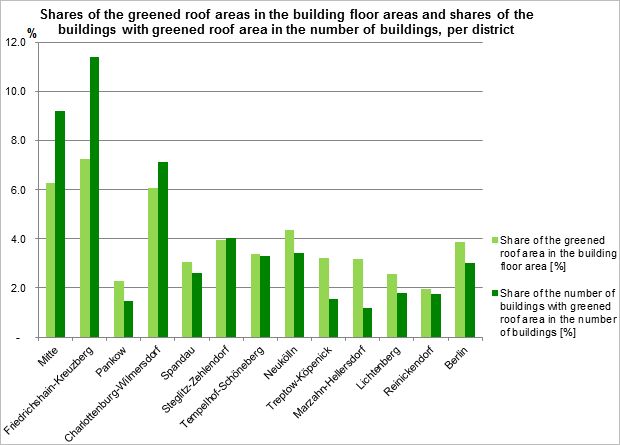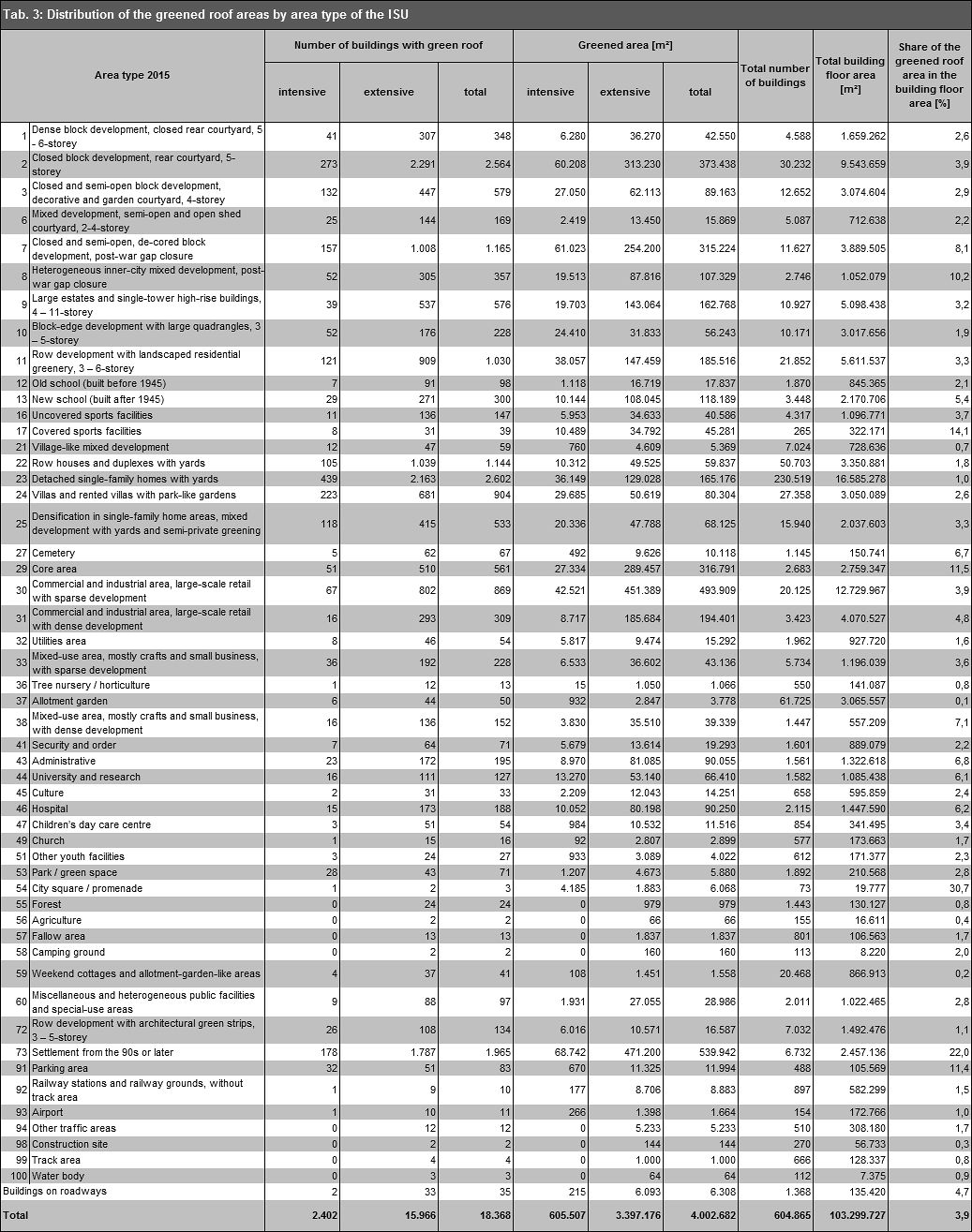In Berlin, 18,368 (3.0 %) out of a total of 604,865 buildings, including underground car parks without overlying buildings, have a greened roof area or greened partial roof areas of > 10 m2. In total, 400 ha of the roof areas are greened (3.9 %) (Table 1). A look at the map reveals a concentration of greened roof areas in Berlin’s inner city.
Green Roofs 2016

Tab. 1: Greened roof areas in Berlin
Image: Umweltatlas Berlin
![Fig. 3: Greened roof area [m²] - Proportion per building use class](/imgscaler/ofWUWa0fiu5U3Wm7XjaHC2PgVC_serHSTrFuYHRkvAY/ropen/L3N5czExLXByb2QvdW13ZWx0YXRsYXMvX2Fzc2V0cy9udXR6dW5nL2dydWVuZGFlY2hlci9lbi1hYmJpbGR1bmdlbi9lYTYxMV8wMy5naWY.jpg?ts=1696229880)
Fig. 3: Greened roof area [m²] - Proportion per building use class
Image: Umweltatlas Berlin
![Fig. 4: Greened roof area [m²] per borough disaggregated according to the greened proportion of roof area [%]](/imgscaler/dIiUAuUsFs-h7f3owwm0xMbhhpgXdDwsqRB6Kn5W3hI/ropen/L3N5czExLXByb2QvdW13ZWx0YXRsYXMvX2Fzc2V0cy9udXR6dW5nL2dydWVuZGFlY2hlci9lbi1hYmJpbGR1bmdlbi9lYTYxMV8wNC5naWY.jpg?ts=1696229853)
Fig. 4: Greened roof area [m²] per borough disaggregated according to the greened proportion of roof area [%]
Image: Umweltatlas Berlin

Fig. 5: Shares of the greened roof areas in the building floor areas and shares of the buildings with greened roof area in the number of buildings, per district
Image: Umweltatlas Berlin
![Fig. 6: Greened roof area [m²] per borough disaggregated according to intensive and extensive greening](/imgscaler/eROcA8pj8dRto4-GyAygDVe6RfQoNe9dJor791da-gk/ropen/L3N5czExLXByb2QvdW13ZWx0YXRsYXMvX2Fzc2V0cy9udXR6dW5nL2dydWVuZGFlY2hlci9lbi1hYmJpbGR1bmdlbi9lYTYxMV8wNi5naWY.jpg?ts=1696229859)
Fig. 6: Greened roof area [m²] per borough disaggregated according to intensive and extensive greening
Image: Umweltatlas Berlin



